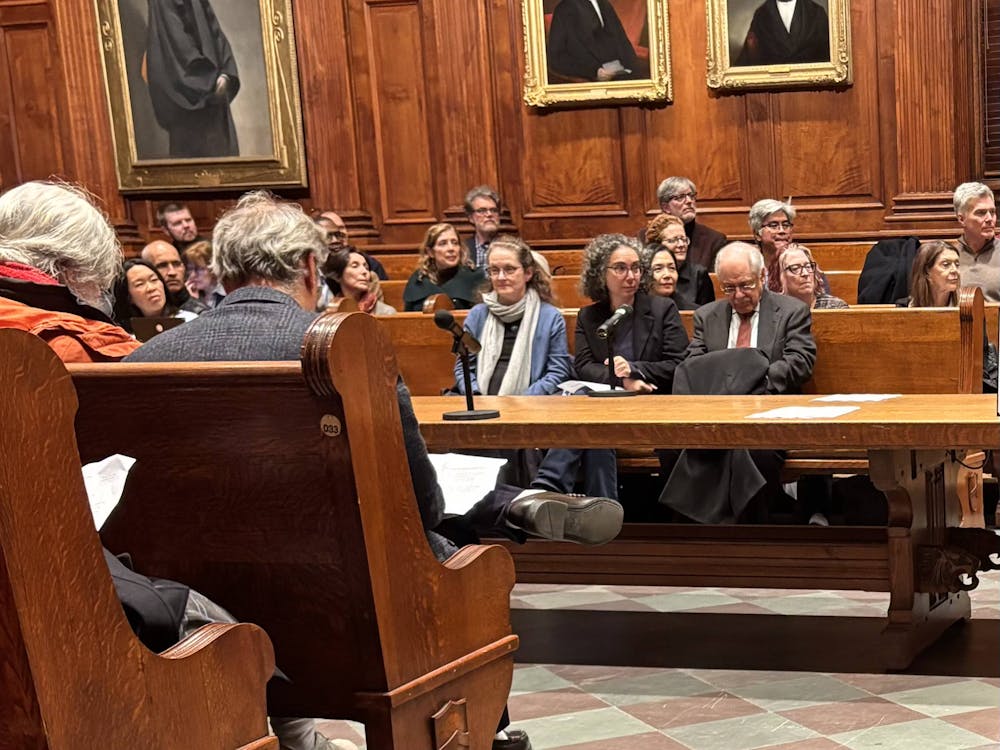"I needed to have a web architecture that was completely different from what was out there, to not just use some general plain template or create a static site where I post, for example, papers that I published - information that you could find in other places like by searching certain databases," Perlstein said. "I wanted to have vibrant, interactive content."
The feature that most stands out to visitors is the modular grids. The home page is filled with grids that contain different kinds of content, and the grids resize and switch themselves around as the user changes the size and shape of the browser. The flexibility of the layout also gives the site the versatility to be viewed properly on any device.
"It's dynamic," Perlstein said. "It could work on any browser and any device because it doesn't matter what the area of the screen is."
The website contains badges at the corner of every grid, which are intended to make the site easy to navigate. When clicked, these badges instantly inform the user of what other similar content is on the site.
Another feature of the site is that it can easily bring data in from other places. The badges support this feature, Perlstein explained. For instance, Perlstein can incorporate data and publications from other websites onto his site. Tweets and comments about the data and papers are collected in a unified place.
"This is going to grow over time," Perlstein said. "I don't want people to have to go to each site and find me; I want everything to be channeled through my site. It gives a mix of internal and external content in this modular, interactive architecture."
Perlstein first decided to build his website earlier this year, after noting that "many lab websites are not really up to date in terms of their content and platform."
He had not maintained a web presence at all up to that point and did not have prior programming or web design experience. He said he had gone to Craigslist to try to hire a web designer. However, Perlstein explained, he quickly realized that even though these designers could take known templates and personalize them, they were not inventing anything new.
Perlstein envisioned creating not just a lab website but what he termed a "self-publishing platform": a place where he could publish his own scientific data and lab work along with time stamps in hopes of one day having it recognized as official content from his lab. A friend introduced him to a web design team, Spruce Interactive, which could provide him with the unique web architecture that he wanted. In April, the designers went to work, Perlstein approved of their design, and a modular platform was born.
When the site was completed at the beginning of this past summer, Perlstein spent a lot of his time blogging about his research and current issues in science. Since the academic year began, he has started blogging about teaching.
Perlstein promotes the content of his website mostly through Twitter and sometimes through Facebook and email correspondence. However, he said he has not yet used the website as a platform for teaching, though he does write a blog on the site recounting the content of his class meetings.
"I have not yet invited students to do anything in terms of class on here, but there's no reason why I won't," Perlstein said. "If my students have any ideas of how we could use this site educationally then I'd be all about it."

Nonetheless, Perlstein said he has been thinking of ways to use Twitter as a teaching tool to try to bring students and authors of different scientific papers together in discussion.
"It's still in the idea phase, but it's something that I want to try out this semester," he said.
Perlstein noted that the code for the website is available for download from the website itself and hopes other scientists create their own versions of the site.
"There's a lot more that you can do with this platform when you have a community of people using it because you could imagine building functionality in here that is useful across the entire architecture," Perlstein said.
If a community of scientists uses the platform, Perlstein said he hopes to integrate functions like Google Chat into his website to facilitate interaction.
In the long term, Perlstein said he hopes every scientist will have a website like his to create a unified broadcast platform to the world. Scientists would use their versions of the website to share information, share their data, discuss their research, raise money for projects and publish their papers.
"This self-publishing platform is part of a bigger process of scientists creating a brand of reputation by having a really active online presence," Perlstein said.







